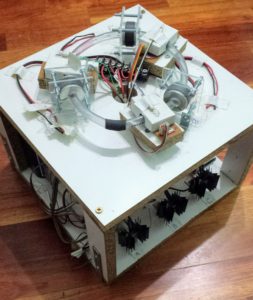Particle accelerators are monumental achievements of modern physics, enabling scientists to probe the fundamental constituents of matter and explore the fabric of the universe. The concept of constructing a mini particle accelerator at home evokes a profound fascination, conjuring images of monumental scientific endeavors on a more personal scale. To understand how to create a rudimentary version of this incredible device, one must first appreciate the physics involved, the essential components needed, and the potential applications of such a project.
The foundation of a particle accelerator lies in the principle of imparting energy to charged particles, typically electrons or protons. By employing electric fields, these particles can be accelerated to relativistic speeds, wherein they gain kinetic energy sufficient to allow for high-energy collisions with other particles. Such interactions can lead to the production of new particles and the exploration of subatomic phenomena. The allure of constructing a mini particle accelerator at home encapsulates the spirit of inquiry, inviting enthusiasts to engage with the physical laws governing our universe.
Before embarking on this adventurous journey, it is critical to acknowledge the complexity of the physics involved and the safety measures that must be taken. A basic understanding of electromagnetism and particle physics is essential, as well as adherence to stringent safety protocols, particularly when dealing with high voltages and radiation. This knowledge serves to elevate the project from mere curiosity to an educational endeavor steeped in scientific integrity.
The first step in building a mini particle accelerator involves gathering essential components. Although the construction of a full-fledged accelerator is impractical in a domestic setting, a simplified version—often referred to as a “Cathode Ray Tube” (CRT) accelerator—can be assembled. Crucial components include:
- Electron gun: This device is responsible for emitting electrons. It typically consists of a heated cathode, which, when heated, emits electrons due to thermionic emission. Additionally, a metal anode is necessary to attract the emitted electrons, initiating their acceleration.
- High-voltage power supply: A power source capable of generating high voltage (on the order of kilovolts) is essential for accelerating the electrons. Various safety measures, such as proper insulation and limiting current flow, should be implemented.
- Vacuum chamber: To minimize collisions with air molecules, electrons must be accelerated in a vacuum. A vacuum chamber, which can be constructed from glass or metal, will create an environment conducive to their unhindered motion.
- Deflection plates: These are used to direct the flow of electrons towards their intended target. By applying a voltage across pairs of plates, the trajectory of the accelerated electrons can be manipulated.
- Detection apparatus: A mechanism is required for observing the resultant interactions once the electrons collide with a target material. This may include simple fluorescent screens or more sophisticated detectors, depending on the complexity of the experiment.
Once the components have been procured, assembly begins with the construction of the vacuum chamber. It is paramount to ensure airtight seals to facilitate the maintenance of a vacuum environment necessary for the performance of the accelerator. The electron gun, carefully aligned within the chamber, must be connected to the high-voltage power supply. Ensuring all electrical connections are secure and insulated is vital to prevent accidental discharges and potential hazards.
With the apparatus assembled, the next phase is to establish the vacuum within the chamber. This may involve the use of a vacuum pump to remove ambient air, allowing for the unimpeded movement of electrons. Monitoring the pressure within the chamber ensures that a sufficient vacuum is achieved, as residual gas can drastically affect the efficiency of the acceleration process.
Following the successful establishment of a vacuum, the electron gun can be activated by applying a voltage sufficient to emit electrons. The intensity of the current flowing through the gun can be adjusted to control the number of electrons produced, thereby affecting the overall energy output of the accelerator. This phase requires precision, as an optimal current level ensures a steady stream of accelerated particles without overwhelming the system.
With the electrons now flung towards the deflection plates, adjusting the applied voltage allows for the manipulation of their trajectory. By varying the voltage on the plates, one can steer the particles toward a designated target, potentially causing interactions that yield observable phenomena. While such interactions may not reach the high-energy levels found in professional particle accelerators, the results can still be illuminating for educational purposes.
The realization of a mini particle accelerator can lead to exciting experimental outcomes. For example, one could explore phenomena such as cathode ray fluorescence, where accelerated electrons collide with materials, resulting in the emission of light. Such experiments provide tangible insights into electron behavior and the interactions that govern atomic structure.
In contemplating the implications of constructing a mini particle accelerator at home, one must also consider the broader narrative it represents. Amateur scientific experimentation fosters a sense of empowerment, engendering a connection between the layperson and the immense complexities of physics. This endeavor embodies the timeless quest for knowledge, while challenging the established boundaries between professional inquiry and personal exploration.
In conclusion, building a simple particle accelerator at home presents an exciting intersection of theoretical understanding and practical application. While the project is replete with challenges, the rewards—both educational and experiential—are substantial. Rooted in the principles of electromagnetism and particle physics, this endeavor offers a unique opportunity to engage with the universe’s most elusive mysteries, shining a light on the pursuit of knowledge that has driven humanity for centuries.












